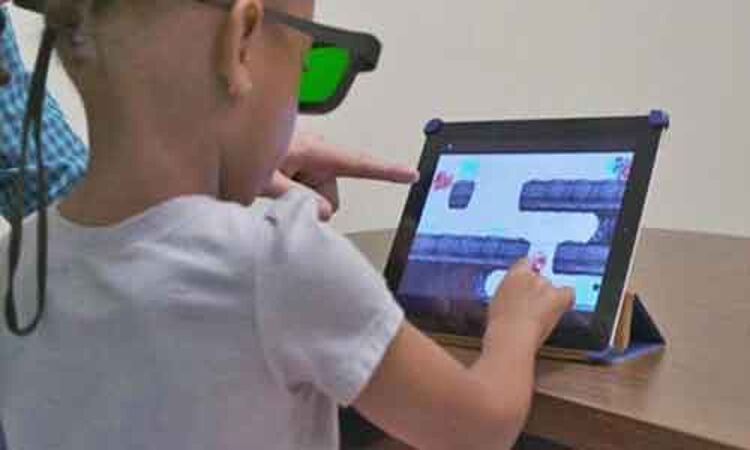- Home
- Medical news & Guidelines
- Anesthesiology
- Cardiology and CTVS
- Critical Care
- Dentistry
- Dermatology
- Diabetes and Endocrinology
- ENT
- Gastroenterology
- Medicine
- Nephrology
- Neurology
- Obstretics-Gynaecology
- Oncology
- Ophthalmology
- Orthopaedics
- Pediatrics-Neonatology
- Psychiatry
- Pulmonology
- Radiology
- Surgery
- Urology
- Laboratory Medicine
- Diet
- Nursing
- Paramedical
- Physiotherapy
- Health news
- Fact Check
- Bone Health Fact Check
- Brain Health Fact Check
- Cancer Related Fact Check
- Child Care Fact Check
- Dental and oral health fact check
- Diabetes and metabolic health fact check
- Diet and Nutrition Fact Check
- Eye and ENT Care Fact Check
- Fitness fact check
- Gut health fact check
- Heart health fact check
- Kidney health fact check
- Medical education fact check
- Men's health fact check
- Respiratory fact check
- Skin and hair care fact check
- Vaccine and Immunization fact check
- Women's health fact check
- AYUSH
- State News
- Andaman and Nicobar Islands
- Andhra Pradesh
- Arunachal Pradesh
- Assam
- Bihar
- Chandigarh
- Chattisgarh
- Dadra and Nagar Haveli
- Daman and Diu
- Delhi
- Goa
- Gujarat
- Haryana
- Himachal Pradesh
- Jammu & Kashmir
- Jharkhand
- Karnataka
- Kerala
- Ladakh
- Lakshadweep
- Madhya Pradesh
- Maharashtra
- Manipur
- Meghalaya
- Mizoram
- Nagaland
- Odisha
- Puducherry
- Punjab
- Rajasthan
- Sikkim
- Tamil Nadu
- Telangana
- Tripura
- Uttar Pradesh
- Uttrakhand
- West Bengal
- Medical Education
- Industry
Eye-tracking-based novel treatment safe, effective for amblyopia in children: ARVO 2022

USA: New research showed a novel, at-home system for amblyopia (lazy eye) treatment in children to be effective and an acceptable alternative to patching. It led to improvements in visual acuity and binocularity and satisfaction among child users and parents. The findings of the study were presented at the Association for Research in Vision and Ophthalmology (ARVO) Annual Meeting, held May 1 to 4 in Denver.
Patching is the gold standard of amblyopia treatment and though it is effective it has inherent shortcomings such as low adherence and discomfort. Binocular therapy with CureSight however, seems to be a real alternative to patching as it is a fun and engaging treatment, done in the comfort of the patient's home with an unlimited variety of streamed content that the child loves, according to Oren Yehezkel, Ph.D., of NovaSight Ltd. In Israel.
The CureSight system is based on the child watching any internet content of his choice on a tablet through special anaglyph glasses over any habitual correction spectacles. The system presents overlapping images with the center of the image for the good eye blurred to a visual acuity of two lines below the acuity of the nonamblyopic eye for binocular stimulation. A 90-Hz eye tracker identifies the gaze position of each eye to provide accurate compliance monitoring. Only the time when the patient is actually fixating on the screen counts as patient compliance.
The researchers conducted a randomized controlled trial to evaluate the safety and efficacy of the CureSight binocular eye-tracking-based device. The analysis included 103 children aged 4 to 9 years, with anisometropic, strabismic, or mixed amblyopia. Participants were randomly assigned to either watch internet content of their choice on the CureSight screen five times a week for 90 minutes or undergo 120 minutes of patching for seven days a week over 16 weeks.
Salient findings of the study include:
· The researchers found that the digital treatment device was noninferior to an eye patch with improvements seen in both visual acuity and binocularity.
· Results were defined as "favorable" for the 87 completed individuals at the 16-week follow-up visit.
· Additionally, in a usability study with 15 pediatric users and their guardians, there was a mean adherence of 93 percent of the prescribed time.
· Parents' satisfaction was also very high with 95 percent of patients' guardians answering that they were likely or very likely to prefer CureSight over patching.
"As a remote treatment, it was important for us to provide an end-to-end service for both the patients and the physicians," explained Yehezkel. "Behind the scenes, there is a dedicated monitoring center that is observing the patient's treatment progress and compliance. In cases of low compliance, the monitoring center contacts the patient's guardians to ensure the child proceeds with the treatment according to the regimen, which takes some of the burdens of the prescribing physician's shoulders."
Reference:
Dr Kamal Kant Kohli-MBBS, DTCD- a chest specialist with more than 30 years of practice and a flair for writing clinical articles, Dr Kamal Kant Kohli joined Medical Dialogues as a Chief Editor of Medical News. Besides writing articles, as an editor, he proofreads and verifies all the medical content published on Medical Dialogues including those coming from journals, studies,medical conferences,guidelines etc. Email: drkohli@medicaldialogues.in. Contact no. 011-43720751


